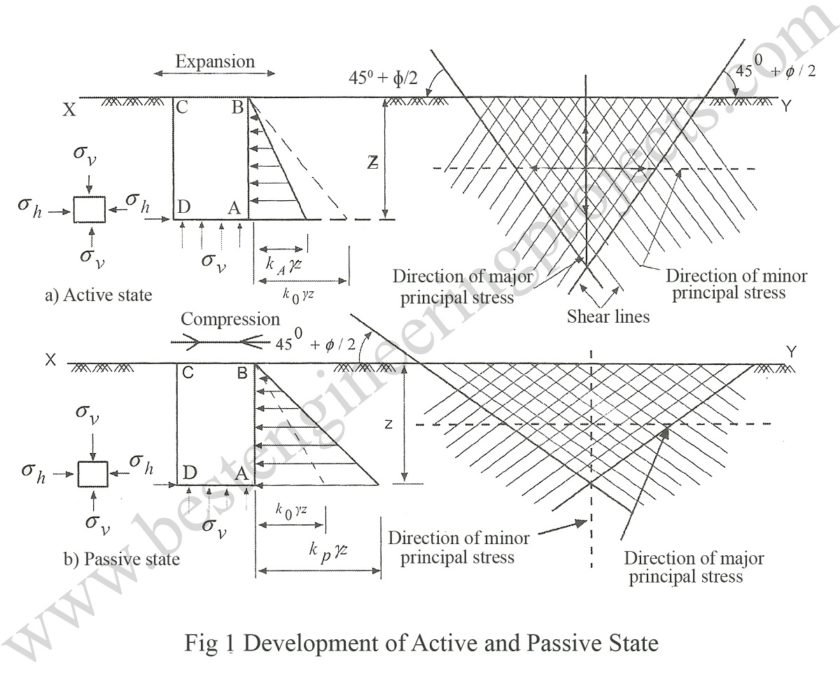W. J. Rankine in 1857 published his theory of lateral earth pressure from a different approach. Rankine’s earth pressure theories provide the magnitude, direction, and point of application of active and passive earth pressures acting on a retaining wall. These theories are known as classical earth pressure theories.
Rankine’s made the following assumptions while deriving his earth pressure theory. The assumptions are:
- The soil mass is homogeneous and semi-infinite.
- The back of the retaining wall is vertical.
- The back of the Wall is smooth.
- The wall movement is sufficient so that the condition of plastic equilibrium is fulfilled.
Development of Active and Passive State by Rankine’s Earth Pressure Theory
In Figure 1, Let XY represents a semi-infinite mass of a cohesionless soil having unit weight, . In the initial stage, every particle of soil mass at any depth will be in a state of earth pressure at rest as long as there is no yielding of soil.
Consider a prismatic block of soil ABCD. The depth of the block is z and say; the cross-sectional area of the block is unity. Let be the overburden pressure acting at the base of the block. Then,
———————————-(1)
The normal stress on the vertical plane AB or DC at depth z may be expressed as a function of the vertical stress.
Or, ———————-(2)
Where, k0 = Coefficient of earth pressure at rest
If the soil is stretched, the soil expands (Refer Fig 1a) and the pressure on vertical sides AB or CD of the prism decreases from its rest condition value while the pressure at the base is unchanged. If the soil is stretched continuously, the pressure will also be gradually decreased until the failure of soil in the form of a wedge behind the face AB takes place. On further stretching of the soil, there will be no further decrease in the horizontal pressure on the vertical side of the prism but the soil flows out.
This phenomenon is called plastic flow. The minimum value of lateral pressure, which brings the soil mass to a state of failure, is called the active earth pressure, and the condition of the soil mass at this state of incipient failure is known as the Rankine’s active state of plastic equilibrium. On the other hand, if the soil is pressed against the wall (Refer Fig 1b), the soil compresses and the pressure on vertical sides AB or CD of the prism increases from its rest condition value while the pressure at the base is unchanged.
If the soil is pressed continuously, the pressure also gradually increases until the failure of soil in the form of a wedge behind the face AB takes place. On further pressing of the soil, there will be no further increase in the horizontal pressure on the vertical side of the prism but the soil flows in.
This phenomenon is called plastic flow. The maximum value of lateral pressure, which brings the soil mass to such a state of failure, is called the passive earth pressure, and the condition of the soil mass at this state of incipient failure is known as Rankine’s passive state of plastic equilibrium.
